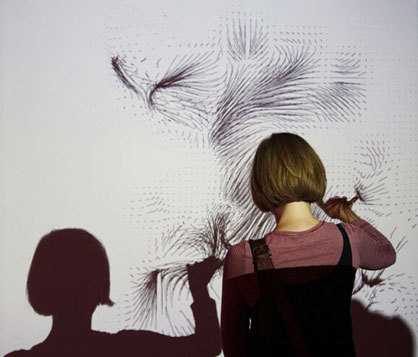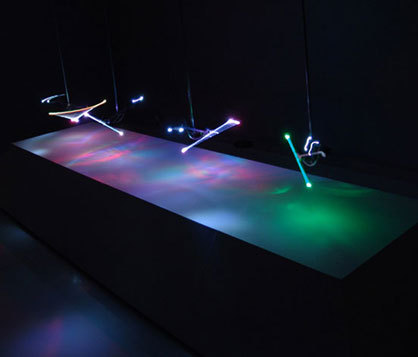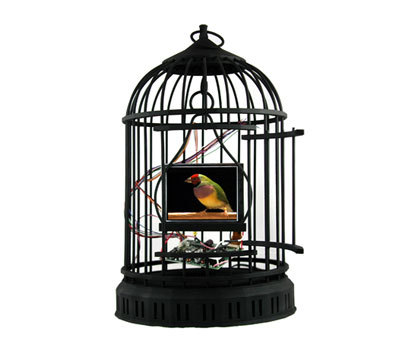Intuitive Interaction
Text by Nora Schmidt
Berlin, Germany
29.09.09
Interaction with sensory user interfaces – computers, automats, mobile phones – has become part of our everyday life.
Interaction with sensory user interfaces – computers, automats, mobile phones – has become part of our everyday life. Interaction designers and software engineers, the masterminds behind those complex systems, make an effort to develop more subtile ways of utilising digital devices ever since. The more intuitive manipulation becomes, the easier it is to embed the technology into everyday life. The procedures which have thereby changed particularly challenge product designers and architects. What does a solely acoustically operated telephone look like? And what about a computer interface working in three dimensions?
'mv_alg_#09' (machine vision algorithm #9) von Pablo Miranda
Before finding their ways into the most recent mobile phones or facade systems such new developments are mostly exemplified in installations – Ars Electronica in Linz is the major international festival for digital art. In collaboration with the first London Digital Week, this year's Tent featured 'Tent Digital' – an extensive exhibition of digital and digitally supported work by international designers and artists.
'Voronoi' – the tangible installation by the London collective Seeper – was particularly impressive. The cellular structure projected onto a giant balloon was dynamically altered by the visitors' touches.
'Performative Ecologies' by artist and author Ruairi Glynn is not as obvious, but therefore more complex. Each one of the four crude and very technically appearing devices is fitted with a punctually attached, luminous rod of fibreglass, which moves back and forth arrhythmically and freely. This installation's poetry lies in the choreography of the little robots. They continuously try to gain the observers attention and impress him by waving their luminous tails. They recognise the reactions and movements of their human audience, learn from failure and share their experience with their robotic neighbours – a social structure of humans and machines.





